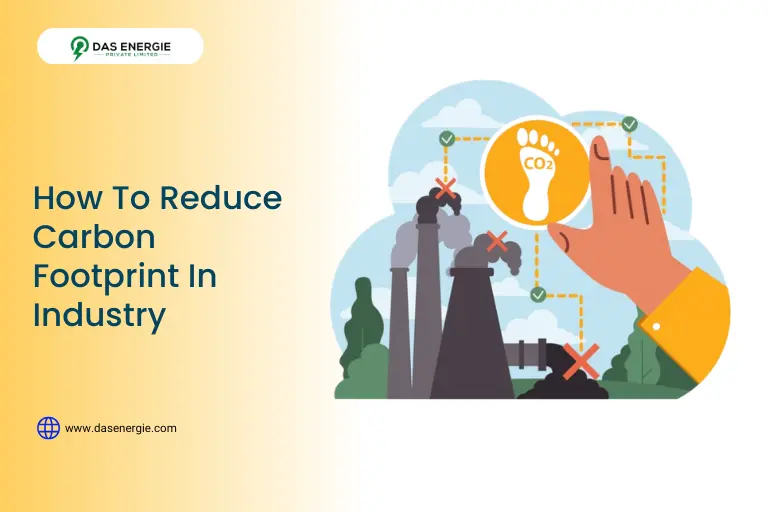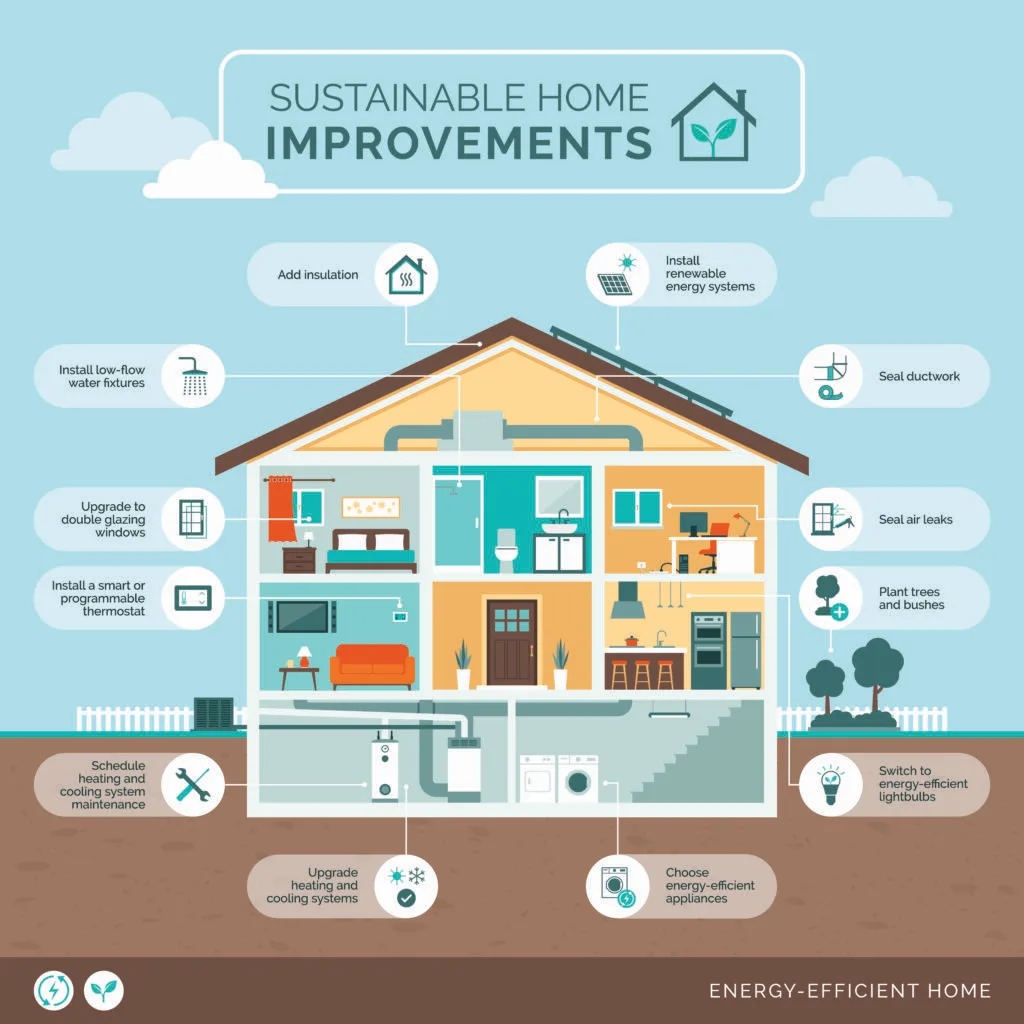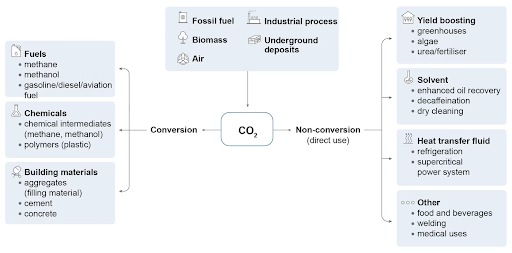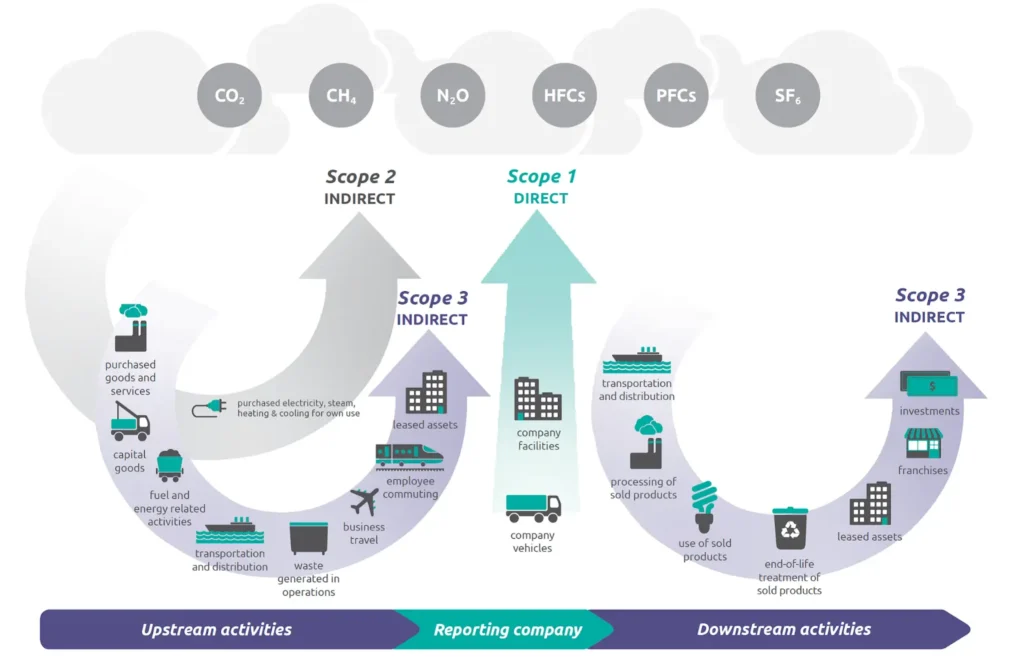


As per the Paris Climate Agreement, the rise in global temperatures must be limited to “well below” 2°C above pre-industrial levels. Preferably, the rise in temperatures must be limited to 1.5°C.
According to NITI Aayog’s official website, India’s emissions in 2019 stood at 23,74,330.35 gigagrams of CO2 equivalent and from electricity generation alone, the amount was 12,39,807.01 gigagrams, nearly 50%. As India aims to achieve the target of net zero by 2070, business leaders, think tanks, employees, workers, and government officials must consider how to reduce carbon footprint in industry.
Table of Contents
ToggleCarbon footprint refers to emissions of CO2 and other greenhouse gases such as methane due to activities of an individual or entity such as a business, country etc. These emissions can result from activities done by humans or other entities, emissions due to generating electricity which is supplied to it, and emissions linked to the operations in a factory.
Here are some of the important ways to reduce carbon footprint in industry:
Unlike nonrenewable energy like fossil fuel, renewable sources of energy have infinite supply. Using solar, wind, and hydro energy can significantly reduce your carbon footprint.
The government provide subsidies to make this green energy transition more affordable for companies.
You must upgrade the manufacturing technology and equipment used in your business. Optimising the processes used in the factory, using energy-efficient equipment, and conducting energy audits will help you determine the ways to improve energy efficiency.
The goods and services that you purchase and sell are part of a supply chain. Several entities are located at every level of this supply chain. If all these entities reduce their carbon footprint, the collective carbon footprint of the entire supply chain will come down.
For example, you can source your raw materials from suppliers with a reputation for environmentally responsible behaviour. You can tie up with suppliers who follow eco-friendly practices and share your vision for carbon footprint reduction.
You can follow clean practices such as using electric vehicles (EVs) to supply your goods to the market. Public transport such as railways for transporting your products will also reduce your carbon footprint.
Water wastage is one of the biggest problems in industrial processes. From the extraction of water to its transportation and usage. Thus, businesses, industries, and governments must prioritise efficiently using water and minimising water wastage.

Thermal power plants generate electricity by burning coal. CO2 and other greenhouse gas emissions for producing electricity come under scope 2 emissions. It leads to the emission of harmful gases which pollute the environment.
If you use energy-efficient technologies and turn off the switches of electronic machines when not needed, you can reduce your electricity bills and carbon footprint. You can read our blog to learn 20 methods to reduce your electricity bills at home.
Governments and businesses can start schemes to reward employees who use cleaner transportation methods such as cycling, carpooling, and public transport. Green commutes by the employees can play an important role in reducing the scope 3 emissions.
Reducing waste generation and recycling the waste can reduce your carbon emissions. For example, if you can recycle the equipment you want to dispose of as waste, it will reduce your carbon emissions. Similarly, reusing 2nd hand machinery and furniture minimises your carbon footprint.
You should also check if the chemicals used in the manufacturing process can be reused or recycled. For example, by arranging technology for onsite solvent recovery, you can reuse the original solvent and save the expense of buying a new one.
Employees commuting to the office also contribute to your business’s carbon footprint. By letting employees work from home, you can not only save their time and effort to come to the office, but you can also reduce your scope 3 emissions. The same goes for hybrid mode where employees have the option to work from home as well as work from the office.
In today’s online world, it is not always necessary for employees to come to the office to attend meetings. You can schedule online meetings with applications like Google Meet, Zoom, and Skype. It reduces the carbon footprint as employees don’t need to use vehicles to reach the office.
Carbon pricing means you must pay a certain amount for your carbon emissions. It can also include receiving a subsidy to reduce your emissions. Emissions trading system and carbon tax are common forms of carbon pricing.
Carbon offsetting means you compensate for your emissions by investing in emissions-reducing measures. Examples of carbon offset are investing in renewable energy projects, reforestation, and improving the energy efficiency of your office.
Governments can set up mechanisms for carbon pricing and offsetting to reduce carbon emissions in construction, manufacturing, food industry etc.
Carbon capture, utilisation and storage (CCUS) is a method where carbon is captured, transported, and used or stored so that it does not enter the atmosphere. As per the International Energy Agency (IEA), CCUS is “a solution for the most challenging emissions”.
It is the most effective emissions reduction technique for the cement production industry. CCUS is highly cost-effective for reducing emissions in iron, steel, and chemical manufacturing industries.
Here are the different ways in which carbon can be used:

Businesses and industries must be transparent about their carbon emissions. Your customers, business partners, and other stakeholders will believe your dedication to reducing your carbon footprint when they see the data of your carbon emissions.
With thorough data, you can track your carbon emissions over the entire value chain, and prioritise areas for improvement. It also helps you in complying with government regulations and studying the efficiency of your emissions-reduction measure.
Do you know that even the internet has a carbon footprint?
Worldwide, every page view of a website produces 0.8 g of CO2. The internet itself consumes 1021 TWh of electricity annually. A green host prevents emissions by using clean sources of energy such as solar and wind energy. It is an excellent method to reduce the carbon footprint of internet-based businesses.
Interacting with your employees can give you insights into how to reduce your carbon footprint. There may be employees whose productivity as well as a reduction in carbon footprint can improve if they work from home. Similarly, if you are in the manufacturing business, they can suggest improvements for making industrial processes more energy efficient.
One of the best ways to reduce your carbon footprint is to innovate and develop better methods and technologies to perform industrial activities. By investing in research and development, you can find better ways to perform your tasks.
You must integrate sustainability into the design of your products. Innovations in the design and manufacturing process can reduce your waste generation and emissions.
For example, McKinsey suggests that using better raw materials, sustainable transport, recycled packaging materials, and cutting overproduction can help the fashion industry reduce carbon emissions by 308 million metric tonnes in 2030.
A green tariff is slightly higher than your traditional electricity tariff. It ensures that the electricity you use is sourced from renewable energy. By paying a green tariff you can reduce your carbon footprint without having to invest in renewable energy infrastructure yourself.
Reducing the carbon footprint is one of the top priorities for many companies today. Here’s why it is so important:
Taking steps to reduce your carbon footprint can significantly improve your reputation. It can attract environment-conscious clients and customers and can increase their loyalty towards your brand. An organisation’s commitment to ethics and public welfare is made abundantly visible in its efforts to reduce its carbon footprint.
For example, an airliner in the tourism industry can showcase its efforts to improve energy efficiency and reduce carbon footprint in tourism. It can create a positive image in the minds of customers.

Climate change is one of the pressing issues of our time. Organisations across the world must reduce their carbon footprint to save the earth’s future. From limiting the rise in temperatures to preventing abrupt weather patterns, there are several benefits of reducing the carbon footprint.
If you are running a logistics business, you can use electric vehicles and recycled materials for packaging to reduce carbon footprint in logistics.
Increasing the energy efficiency of your office and using renewable energy sources such as solar electricity can reduce your electricity bills. By reducing the operating cost of your office, you can thicken the bottom line significantly.
Investors often check the environmental sustainability of a business before investing in it. Reducing your carbon footprint makes you look good and appealing to an investor. Moreover, using renewable energy makes your business less vulnerable to disruptions in the fuel supply chains.
In today’s competitive landscape, taking environment-friendly steps can give you an edge over companies which don’t track their carbon emissions. As consumers seek environment-friendly choices, you can potentially secure more revenue by reducing your carbon footprint.
For example, if you are in the fashion industry, you can tell your customers that your clothes are made from recycled fibre. By telling them how much you have reduced your carbon footprint in the fashion industry, you can win their sympathy and support.
A large chunk of the workforce today comprises millennials and Gen-Z. Many of them are environmentally conscious and are likely to be attracted to companies with a reputation for green practices. It makes it easier for you to sell your work culture to the younger generation.
Government policies and regulatory scrutiny often target the carbon footprint of businesses and industries. To ensure that you are fully compliant with the law and the authorities’ expectations, you must do your best to reduce your carbon footprint.
Estimating the carbon footprint is a complex task. Here are the steps you can follow to reduce your carbon footprint:
You have to find out the major sources of carbon emission in your business. It can include the carbon emissions due to the prodcution process, transportation of employees, burning of fuels etc.
You need data about your emissions. You can look at your electricity bills, the distance travelled due to transportation, the amount of waste generated, and the amount of fuel you have used.
Green house gas emissions are calculated by using this formula:
Carbon footprint = Data x Emission factor
The emission factor for different kinds of emissions can be found from the US Environment Protection Agency’s website.
Let’s take an example to illustrate how carbon footprint is calculated.
As per the latest emission factors, using 2 mmBtu of Anthracite is equal to 103.69 kg of CO2 and 1 mmBtu of coal coke is equal to 113.67 kg of CO2. So this is how the carbon footprint of these 2 items can be calculated:
Carbon footprint = (2 x 103.69 + 1 x 113.67) kg = 321.05 kg.
Add the carbon footprint of all the processes and components to find out your total carbon footprint.
As per the Greenhouse Gas (GHG) Protocol corporate standard, a company’s greenhouse gas emissions are divided into 3 scopes:
Scope 1 emissions result from sources which are directly owned and controlled by an organisation. It includes burning fuels, gases from refrigerants, and emissions during the manufacturing process. To reduce scope 1 emissions, you need to use more energy-efficient equipment and shift to cleaner sources of energy.
Scope 2 emissions are associated with the production of energy required in your business. It includes emissions associated with producing electricity, heat, steam etc. These emissions are produced off-site by the utility which supplies you the energy.
Scope 3 emissions comprise the biggest chunk of emissions for any business. It includes all the emissions which happen in the value chain of the business. Note that the sources of these emissions are not directly owned or controlled by the business. It can be further divided into upstream and downstream emissions.
Upstream emissions are related to the functioning of your business. It includes the goods and services you purchase, waste generated in daily operations, business travel, employee commutes, and leasing assets.
Downstream emissions are related to the consumption of your products. It includes processing and use of sold products, transportation and distribution, recycling sold products, franchises, and investments.
Here’s a graphic classification of scope emissions:

India’s Carbon Footprint
It can be challenging to reduce your carbon footprint. Optimising industrial processes and sourcing equipment and materials from clean sources can be a difficult task. Improving production processes may require an overhaul of the entire machinery, leading to significant expenditure. Installing renewable sources of energy also comes at a cost.
But the long-term benefits of investing in reducing your emissions are significant. By upgrading your technological processes, you will improve your business’s efficiency and your savings. It can draw more investments and improve your business’s brand image.
Though India’s per capita emissions are among the least in the world, our country is among the top 3 emitters globally. The urgency of climate change is such that all stakeholders have to grapple with the question of how to reduce carbon footprint in industry. From tracking sources of emissions to using energy-efficient technologies, there are several steps businesses can take to reduce their carbon emissions.
Carbon footprint covers the emissions of carbon dioxide and other greenhouse gas emissions by an entity such as a business or country.
You can calculate the carbon footprint of a substance by multpilying the amount which you have used with its emissions factor.
Sourcing materials from local sources, encouraging designs with low carbon emissions, recycling construction materials wherever possible, and using renewable energy and biofuels are some of the ways to reduce carbon footprint in the hospitality sector.
Some of the ways to reduce carbon footprint in the textile industry are using alternative textiles such as hemp and spider silk, less polluting dyes, and recycling materials used in the value chain.
Encouraging sustainable consumer behaviour, using recycled fibre and packaging materials, minimising overproduction, and utilising clean energy-based transport are some of the ways to reduce carbon footprint in fashion.
You can reduce carbon emissions on a construction site by choosing recycled steel, timber, renewable energy, and greener alternatives to concrete.
Mr Das’ expertise spans various aspects of solar energy, including photovoltaic technology, solar thermal systems, and energy storage solutions. He contributes profusely to our blogs to share his keen knowledge and expertise with those seeking information regarding solar system installation. He brings a wealth of practical knowledge and real-world experience to his writing. His articles offer valuable guidance on navigating the intricacies of solar energy projects, from site assessment and system sizing to financing options and maintenance strategies.
